The purpose of this 3 or 4 post series is to save you time and money. I’ll take you though the steps you can use to determine if your new idea or product that you want to create will be worth your time and effort.
Which guy would you rather be?
Jim, who spends a year creating a membership website for a certain niche that he believes would love his product;
Or Jeff, who spends a month testing his niche market, only to find out his idea for a product would have totally bombed.
I choose Jeff. Why?
Because when doing any kind of business, there’s a HUGE difference between what you believe, and what you know. And here’s the ugly truth—what you believe means nothing. Your gut feeling can only take you so far. Jim’s beliefs may or may not turn out to be profitable for him. Jeff knows his idea is not going to work, so he’ll move on to the next until he finds one that does.
So how do you know for sure if your idea will be successful or not, before you begin investing a significant amount of time creating your product?
Step 1: Make Sure a Market Exists
The first thing you have to do is make sure a market for your product exists. That means there are people who are interested in what you have to say, and on top of that, willing to pay for the kind of information you have to offer. If you end up finding out that a market does not exist, you’ve already saved yourself a lot of time.
“But Pat! My idea is totally revolutionary, and nothing like it has ever been done before!!!”
Here’s my two-part response to that:
1) Is that what you know, or just what you believe? And,
2) Are you sure you want to create the first kind of something? As Seth Godin says in Free Prize Inside (full disclosure – I earn a commission if you purchase), “version 1.0” of most things end up failing. Think about Napster, Friendster, and even the Segway. Innovate and be remarkable in a proven niche, and you’ll be more predictably successful.
Moving on. Here are the key indicators you should look at to determine if your ideas have a market or not:
Google Advertisements
Type in keywords related to your idea into Google Search. If you see paid advertisements on the results page (see below), then that’s a good sign there is a market for that particular niche. Read each one carefully to see exactly what they are about.
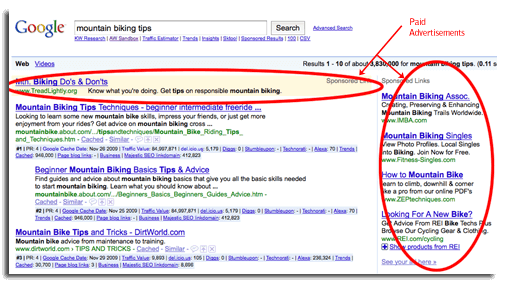
Competition
If there are other websites doing something similar to what you had in mind, then a market for your product idea obviously exists. You may have even noticed some of your potential future competitors in the paid ads that showed up in your Google Keyword Search. Don’t Worry! This is a good thing. We can later use information from the websites and products of our competitors to our advantage, but we’ll save that for a later blog post. Just remember—competition is good, both for you and for the consumer.
Amazon
Do a quick search at Amazon.com for any books or other items related to your product idea. If you end up with results in your search, again—don’t worry. Like I mentioned before, this just confirms that there is a market for your product.
Check out the top books and read the reviews. The more reviews there are, the better, because this confirms that people are actually paying money for this kind of information. After reading through the negative reviews, is there anything you should make sure you include in your product so that you don’t get the same responses from your future customers?
Forums
Here’s a cool trick.
For whatever niche you’re looking into, type into Google Search: “Forum:Niche“, where Niche is the name of your particular niche, or a related keyword. For the example below, we’re going to use “mountain biking tips”.
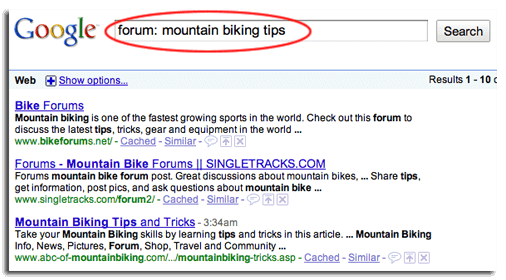
You’ll end up with a list of all of the most popular online forums related to that niche. Click on the first few and browse around a little. Here are a few questions to ask yourself as you do this:
- Is there a lot of conversation going on? How many posts or threads exist within the forum?
- When was the latest post? This will help you determine how active people are in the forum.
- What are people talking about? Are there any sections within the forum related to your idea or product?
- Ninja Tip: Do a search within the forum itself for certain keywords that relate to your idea and see what you come up with. You may need to register for the forum in order to perform a search, depending on the admin’s settings.
- Is there anything you may want to add to your product or idea that you see in the forum? Please make note for future reference.
Quantcast
Here’s a cooler trick.
In the search field at Quantcast.com, type in the url of one of the forums that you visited. Here’s our result for bikeforums.net:
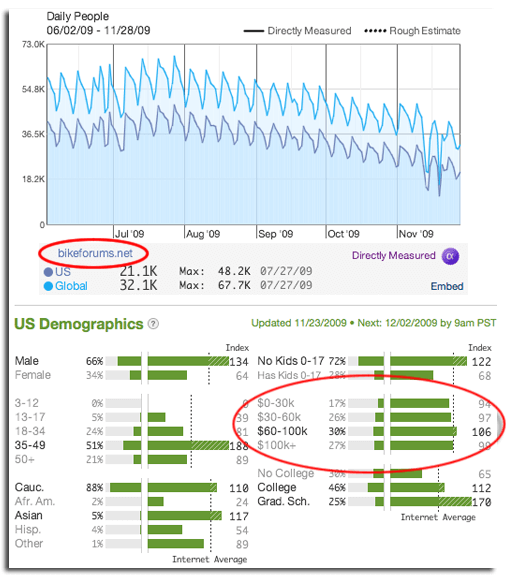
You now have an exact profile of the kinds of people who are interested in your niche. In less than 10 seconds, we know their:
- Gender
- Age
- Ethnicity
- Number of Children
- Income Level; and
- Education Level
Take note of the income level that comes up from your search. If most are in the $0-3ok range, you might want to think about a different market. In the mountain biking market, it’s no surprise that most are in the $60-100k range—some of those bikes are really expensive! We know these people have money to spend.
On the left hand side of your Quantcast results page, click on “Geographic” to see exactly where they are located (this feature is not available for some sites):
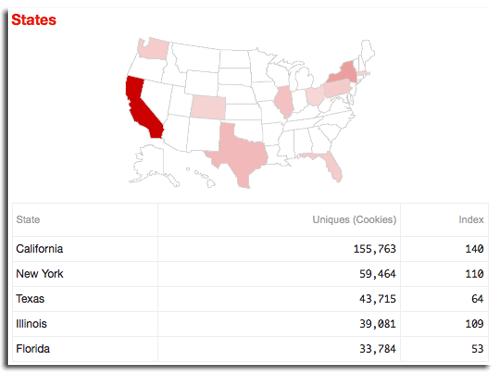
Would you benefit from geo-targeting your product? Are there specific things you have to learn about a certain region in order to make your product successful?
Next, on the right hand side of Quantcast, you can see what other sites these people have been to as well:
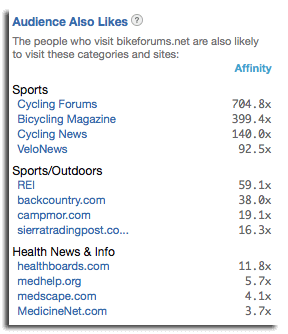
Not only does this information help us confirm that there is a number of people who may be interested in our product, but it will help us in the future when we start advertising and writing copy.
Online Commercial Intention
Lastly, I’d like to cover something called Online Commercial Intention, or OCI. According to Market Samurai, “OCI is an indicator of the chances that someone searching for a keyword is looking to buy as opposed to browsing for information.”
Market Samurai, a paid tool, is an excellent keyword research device which actually spits out the OCI as one of the results for each keyword that you analyze. You can, however, enter keywords one-by-one into the tool at the Microsoft AdCenter Labs here.
Enter your niche keywords (try as many as you’d like), and you’ll get an idea of how many people are “just looking”, vs. how many people are “looking to buy”. I wouldn’t base my decision to move ahead with a niche or not based on this tool alone, but it is a somewhat reliable indicator for commercial intent which may play a role in the later steps in this series.
Coming up…
Of course, there’s a lot more than just knowing there’s a market out there for your product. In the next post, we’ll discover how we can get closer to knowing exactly how your target audience will react to your idea or product.
Cheers!
For Part 2 of this Series, Click Here.



